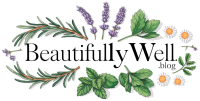Korean beauty rituals are considered some of the most exquisite in the world. In the land of “morning freshness,” skin care and the preservation of its natural beauty are elevated to a real cult. Just imagine: a Korean woman devotes an hour and a half to skin care, and she does it every morning and every evening.
Hydrophilic oils
One of the Asian know-how is the method of two-step skin cleansing. Silicone-based mascara, oil-based lipsticks, mattifying foundations… Korean women use hydrophilic oil to wash all these things off their faces. It copes with its task perfectly, and it transforms into a light milk when in contact with water. Besides, it doesn’t penetrate deep into the skin, but binds grease, dirt and foundation molecules on its surface, and then you wash it off with water. In the end, your skin is clean but not over-dry.
Konnyaku Sponge
A konnyaku sponge is a washcloth made from the roots of the Amorphophallus konjacus plant. When dry, konnyaku resembles a piece of light stone, but the sponge becomes soft on contact with water. Unlike other facial sponges, it does not just cleanse, but also excels at exfoliating and clearing pores. Before using a konnyaku sponge, you need to wet it so that it softens and increases in volume by about one and a half times. The sponge is ready for use when it is completely soft, without a hard “core. Gently squeeze it, then begin cleansing from the forehead to the chin, paying special attention to problem areas. It is recommended to change the sponge every two to three months.
Moisturizing and nourishing products
In Asia, a basic skin care routine always begins with the application of a moisturizing lotion and/or a nourishing milk. These products are enriched with active ingredients and are excellent for refreshing the skin and providing instant hydration after cleansing.
BB Creams
Want your skin to look natural but also appear more attractive? BB cream is here to help! Thanks to their high-tech formulation, BB creams help conceal imperfections in tone, hydrate, nourish, and protect against UV light. Another advantage of BB creams is their amazing staying power and invisibility on the face. Light, silky, melting texture wraps a soft veil around the skin, hides imperfections and creates the effect of naturally flawless skin.
Сushions.
Another Korean innovation: cushions. Yes, yes, these lightweight foundation fluids also came to us from Korea. Couchon represents a powder puff with a sponge impregnated with the product and a dry sponge that is used to apply the cosmetics to the skin. The pores of the sponge loosen the texture of the cream resulting in a weightless emulsion which doesn’t roll away and evenly spreads even when applied in several layers. Because they’re so compact and lightweight, their packaging looks more like a powder compact than foundation, so you can easily carry them in your purse to touch up your makeup throughout the day.
Cosmetics with ginseng
Korea was the first country to establish mass cultivation of ginseng. The botanical name of ginseng is Panax, which means “panacea” – a cure for all diseases. It is also called the root of life and the gift of immortality. The healing properties of ginseng are widely used in cosmetology. This plant is usually grown at the age of 4 to 5 years because at the age of 6 it is at its maximum in saponins (active substances).
Ginseng is then sorted into groups: “heavenly”, “earthly”, “good” and “cut”. Selection for one group or another is based on many parameters, for example, a “heavenly” root must weigh at least 68 grams, have no holes, look like a person, and be translucent. The cost of the root varies greatly depending on its class: the closer to “heavenly”, the more expensive. The roots are then washed, steamed, and dried, yielding what is known as red ginseng. It contains a large amount of vitamins, beneficial acids, and trace elements. Cosmetics based on red ginseng renews and smoothes the skin, and in the long term stimulates regeneration processes and improves microcirculation.
